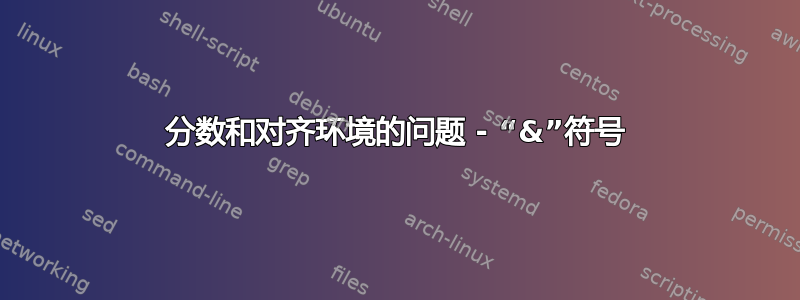
我是 LaTeX 的新手,因此需要你的帮助。
我想将\leq符号对齐在符号下方+。问题是+符号包含在分数内,因此\begin{aligned}--\end{aligned}环境不允许我将&符号插入到该特定分数内。
我怎样才能顺利地实现这一目标?
一个例子:
$\displaystyle \begin{aligned}
\sqrt{\frac{2x}{y **&+** z}}+\sqrt{\frac{2y}{z+x}}+\sqrt{\frac{2z}{x+y}}\\
&\leq 3.
\end{aligned}$
PS:我搜索过该网站,但没有找到与我的问题类似的内容。(也许我没有搜索,对吗?)
答案1
我建议采用不同的方法,即使用\hphantom插入适当数量的水平空间:

笔记:
- 我使用
\hphantom而不是\phantom因为我不想让的垂直尺寸\sqrt{{\frac{2x}{y **}}}影响第二行。 - 对齐点位于其他术语(例如
\sqrt和)内frac通常不是那么容易做到的,而 David 的解决方案非常巧妙,将其移到外面并插入负数\hspace。我个人永远不会想到这一点,因为我倾向于认为对齐是从左向右移动的。
代码:
\documentclass{article}
\usepackage{amsmath}
\begin{document}
$\displaystyle \begin{aligned}
&\sqrt{\frac{2x}{y **+** z}}+\sqrt{\frac{2y}{z+x}}+\sqrt{\frac{2z}{x+y}}\\
&\hphantom{\sqrt{{\frac{2x}{y **}}}}\leq 3.
\end{aligned}$
\end{document}
答案2
如果您需要排版一些多行方程式,并且没有通过=或进行全局对齐\leq,我建议您尝试:
\begin{multline}
f/i/r/s/t + l/i/n/e
\\
\leq s/e/c/o/n/d + l/i/n/e
.\end{multline}
当然你应该使用适当的显示方程和永远不会 $\displaystyle。envmultline由包提供amsmath,您无需将其放入另一个环境中(它类似于equation)。此外,它还有一个带星号的变体multline*,可以抑制编号。
答案3
这是一个非常奇怪的对齐位置,通过将不等式与子项中的对齐,您想要传达什么数学含义+?
然而:

\documentclass{article}
\usepackage{amsmath}
\newlength\mlength
\begin{document}
\settowidth{\mlength}{$+**z$}
$\displaystyle \begin{aligned}
\sqrt{\frac{2x}{y **+** z}}&+\sqrt{\frac{2y}{z+x}}+\sqrt{\frac{2z}{x+y}}\\
&\hspace{-\mlength}\leq 3.
\end{aligned}$
\end{document}


